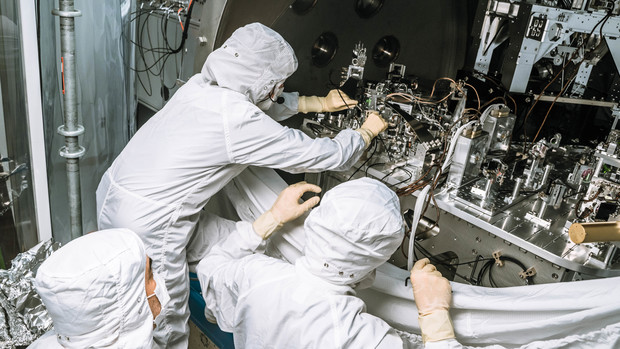
LIGO Hanford engineers swap out a fiber cable in LHO’s vacuum squeezer during the October 2019 commissioning break. Credit: Nutsinee Kijbunchoo (ANU/LIGO lab)
Update on Quantum Squeezing Device
News Release • December 11, 2019
A recent addition to NSF’s LIGO detectors and the European Virgo detector, is a squeezed light device. A "squeezer’s" function is to improve the sensitivity of interferometers by manipulating quantum fluctuations in the vacuum in which the instruments operate. These ‘vacuum fluctuations’ can change the properties of individual photons and reduce the certainty with which gravitational wave detectors like LIGO measure the travel time of photons through the instrument. Since changes in the arrival times of photons are what reveal the passage of a gravitational wave, accurately measuring photon travel-time through the instrument is paramount to making a detection. Improving this measurement with the squeezer will make LIGO and Virgo more sensitive.
All of the world’s laser gravitational wave detectors now use a squeezer. Both LIGO detectors in the United States, and the Virgo detector in Italy installed their full-scale squeezers prior to this current observing run (which began on April 1), while the GEO detector in Germany has been using a prototype device for years. In two papers published last week in the journal “Physical Review Letters”, teams from LIGO and Virgo reveal just how well these newest upgrades to the world’s gravitational wave detectors are performing. To read more about this fascinating quantum vacuum playground, check out these two stories from MIT and the Albert Einstein Institute:
LIGO is fully supported by the U.S. National Science Foundation and is managed by Caltech and MIT




